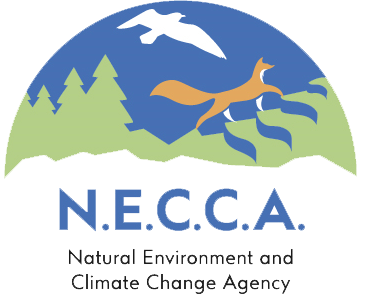WIND
Project info
*Project funded under contract with the NCESD (National Centre for the Environment and Sustainable Development) – current N.E.C.C.A.
Dr. Vassiliki Kati. Coordinator
Dr. Christina Kassara, biologist
Lydia Tampouratzi, rural & surveying Engineer
Dimitris Gotsis, product & system design Engineer
Dr. Olga Tzortzakaki, biologist
Dr. Dimitris Vassilakis, forester
Dr. Sylvia Zakkak, biologist
Maria Petridou, agronomist, PhD student (BCL/UOI)
Lavrentis Sidiropoulos, environmentalist, PhD student (BCL/UOI)
Maria Psaralexi, biologist, PhD student (AUTH)
Nikos Βukas, biologist (MSc) (BCL/UOI)
Tonia Galani, biologist, MSc student (BCL/UOI)
External collaborators
Dr. Zoi Vrontisi, engineer
Dr. Aris Moustakas, engineer
Goal
Research questions
- Where should windfarms be located in Greece with the minimum possible impact on biodiversity and landscape?
- What factors influence the land take of windfarm infrastructures in the Greek landscape?
- What improvements are proposed for the convergence of the two policies, climate change and biodiversity conservation, in the context of the Sustainable Development Goals?
Actions
1.
Spatial data analysis
2.
Sustainable spatial planning & SDGs
3.
Land take and windfarms
4.
RES & SDGs
5.
Result dissemination
Results
Databases

Kati, V., Kassara, Ch. 2020. Sustainable spatial planning for windfarms in Greece. Mendeley Data, v1
Publications
Kati, V*., Kassara, Ch., Vrontisi, Z., Moustakas, A. 2021. The biodiversity-wind energy-land use nexus in a global biodiversity hotspot. Science οf the Total Environment, 768, 144471.
Kati, V*., Kassara, C*., Panagos, P., Tampouratzi, L., Gotsis, D., Tzortzakaki, O., Petridou, M., Psaralexi, M., Sidiropoulos, L., Vasilakis, D., Zakkak, S., Galani, A., Mpoukas, N., 2023. The overlooked threat of land take from wind energy infrastructures: Quantification, drivers and policy gaps. Journal of Environmental Management 348, 119340.
Open lectures

Kati V. 2021. The nexus roads-windfarms-biodiversity under the light of sustainable spatial planning. University of Thessaly – Department of Civil Engineer. 22/12/2021. (in Greek)

Kati V. 2021. The triptych biodiversity-roads-windfarms in the context of the Sustainable Development Goals: the Greek case. Open University of Cyprus.10/2/2021. (in Greek)

Kati V. 2021.. Need of habitat fragmentation minimization policy in the EU for resolving road sprawl -wind farm -biodiversity loss nexus: the case of Greece. Policy Committee of the European Section of the Society for Conservation Biology. 26/1/2021. (in English)
Conferences
Poster

WIND poster: Sustainable scenario for windfarm spatial planning in Greece for minimal impact of wind energy projects on biodiversity
Media
This section lists articles of the international or national/ local press referring to the scientific findings of our research. The articles are indicative and are quoted without necessarily reflecting the opinion of BCL. The media coverage of our research is an indicator of the impact of our research on society.
INTERNATIONAL PRESS
Hans von der Brelie. EURONEWS CHANNEL: Why are plans to build more wind farms in Greece so controversial? 12/4/2024
Eurydice Bersi. Reporters United. Too much of a good thing? Wind power and the battle for Greece’s wild heart. 7/10/2021
Eurydice Bersi. NZZ. Ein Kampf um Windmühlen in Griechenland – der Naturschutz ist im Gegenwind. 21/3/2021.
TNH Staff. The National Herald. Greece Goaded to Keep Wind Farms Away from Environmental Areas. 24/3/2020
Giorgos Lialios. E-kathimerini. Experts urge Greek gov’t to rewind turbine plans. 23/03/2020
NATIONAL PRESS
Κώστας Αγορής: Πρωϊνός Λόγος. «Αστερίσκοι» για τη χωροθέτηση αιολικών πάρκων στη χώρα μας! 13/1/2024
Γιώργος Λιάλιος. Καθημερινή. Πόση γη «χάνεται» στα αιολικά. 5/1/2024
Μάριος Διονέλλης. Εφημερίδα των Συντακτών. Αντιπεριβαλλοντικά τα αιολικά με τη βούλα της επιστήμης. 31/1/2021
Γιώργος Λιάλιος. Καθημερινή. «Ντιμπέιτ» για αιολικά και Natura. 23/3/2020
Βαρβάρα Αγγέλη. Typos i. Επτά φοιτητές επιχειρηματολογούν για τα αιολικά πάρκα. 17/5/2020
News
News on the WIND project, including notifications of new material published, articles in the press and other media, relevant policy impact and feedback from society are posted in the BCL facebook page. Selected news are posted here (See Science for Society posts – tag: wind)


